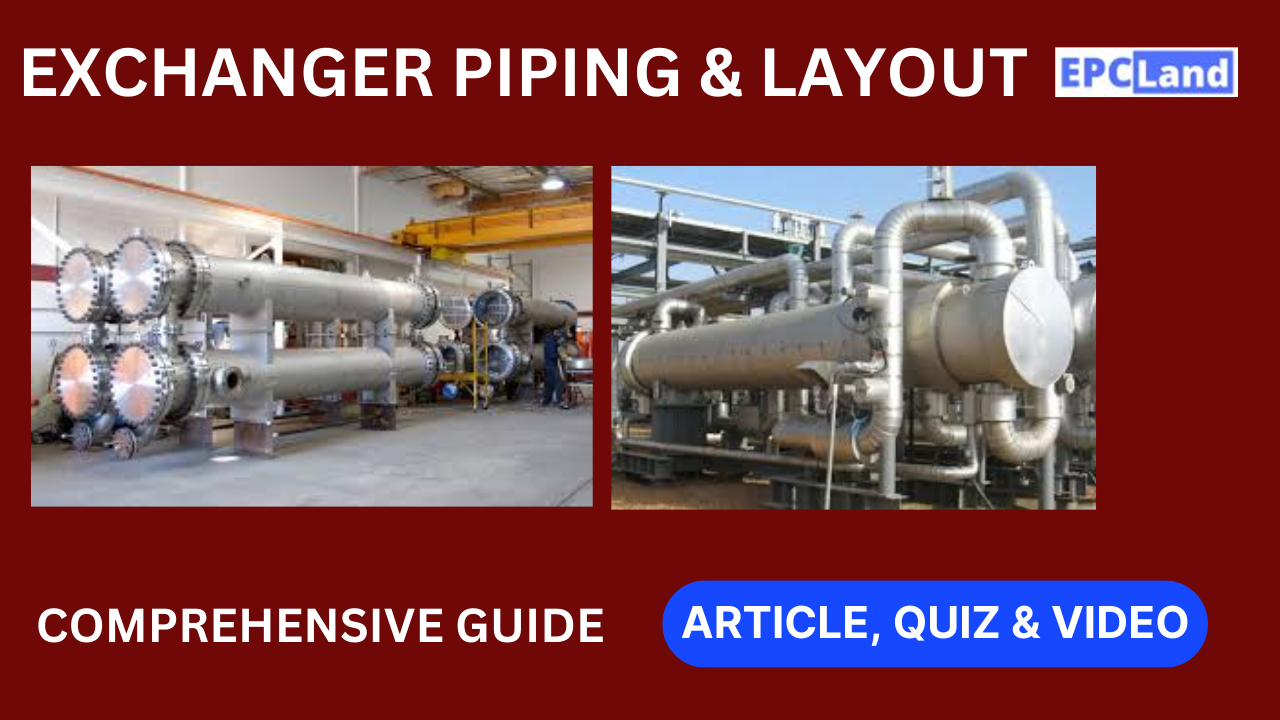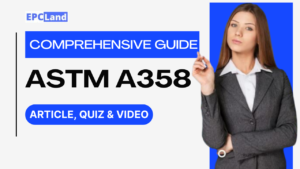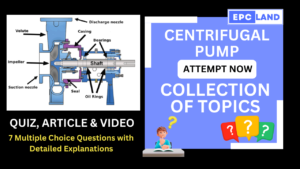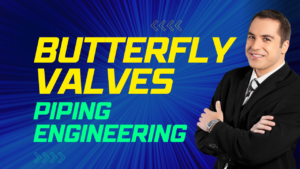Introduction
In the intricate landscape of the oil and gas sector, the significance of exchanger layout and piping design cannot be overstated. These foundational components play a pivotal role in the seamless operation of industrial processes, particularly in terms of optimizing efficiency and safety. At the heart of these considerations lies the imperative of achieving efficient heat transfer and fluid flow, which are essential for the successful execution of various processes within the industry.
Table of Contents
Importance of Efficient Heat Transfer and Fluid Flow
Effective heat transfer is a fundamental aspect of many processes within the oil and gas sector, including refining, petrochemical production, and power generation. Heat exchangers are central to this process, enabling the exchange of thermal energy between fluids of varying temperatures. Proper heat exchanger design ensures that heat is efficiently transferred, leading to improved energy utilization, reduced operational costs, and enhanced overall process performance.
Fluid flow, on the other hand, is the lifeblood of these industrial operations. The design of piping systems directly impacts the flow of fluids, whether they are hydrocarbons, chemicals, or other substances critical to the processes. Efficient fluid flow not only ensures smooth operations but also helps prevent issues such as pressure drops, flow restrictions, and undesired turbulence that can hamper productivity and safety.
Ensuring Safety and Compliance
Beyond efficiency, exchanger layout and piping design are intricately linked to safety considerations in the oil and gas sector. Mishandled heat transfer or improper fluid flow can lead to catastrophic incidents, including leaks, fires, and explosions. Proper design and layout are essential to minimize the risks associated with these potential hazards.
Moreover, the oil and gas industry operates within a tightly regulated environment, subject to a complex web of industry standards and government regulations. Compliance with these standards is not just a matter of legality but a crucial factor in maintaining the safety of workers, facilities, and surrounding communities. By adhering to established design guidelines and regulations, companies can proactively mitigate risks and ensure the long-term sustainability of their operations.
In this article, we delve into the intricacies of exchanger layout and piping design in the oil and gas sector. By understanding the nuances of these aspects, engineers, designers, and decision-makers can optimize processes for maximum efficiency, safety, and compliance. From selecting the appropriate heat exchanger types to designing optimal piping systems, the following sections will provide insights into the critical steps and best practices that underpin successful operations in this dynamic industry.
Do not miss the Detailed Course on Exchanger Piping & Layout
Enrollment Link
Exchanger Layout Design
The design of heat exchanger layouts holds a pivotal role in optimizing the efficiency and effectiveness of heat transfer processes within the oil and gas sector. This section delves into the intricacies of exchanger layout design, encompassing considerations ranging from process requirements to the arrangement of heat exchanger networks.
Understanding Process Requirements
At the heart of effective exchanger layout design lies a deep understanding of the specific process requirements. These requirements are shaped by factors such as temperature ranges, pressure levels, the nature of fluids involved, and the desired heat transfer rates. Engineers must meticulously analyze these factors to select the most suitable types and sizes of heat exchangers for the given application.
Different processes within the industry may demand different heat exchanger configurations. For instance, the cooling needs of a distillation unit differ markedly from those of a catalytic cracking unit. By accurately assessing these requirements, engineers can ensure that the selected heat exchangers effectively fulfill their intended roles, thereby enhancing overall process efficiency.
Selection of Exchanger Types
The selection of appropriate heat exchanger types is a critical decision in the design process. Various types, including shell-and-tube, plate, and finned-tube exchangers, offer distinct advantages and disadvantages. Factors such as heat transfer efficiency, pressure drop, maintenance requirements, and susceptibility to fouling influence the choice of exchanger type.
For instance, shell-and-tube exchangers are renowned for their versatility and robustness, making them suitable for a wide range of applications. On the other hand, plate exchangers are favored for their compactness and efficiency in applications where space is limited. The intricacies of exchanger type selection are closely tied to achieving the right balance between heat transfer performance and operational considerations.
Spatial Arrangement
Efficient spatial arrangement of heat exchangers is vital for ensuring optimal process flow, maintenance accessibility, and overall safety. Placing exchangers too closely together can lead to operational challenges, hindering maintenance and potentially raising safety risks. Conversely, spacing exchangers too far apart might result in excessive pressure drops and inefficient heat transfer.
The layout should also take into account factors such as process sequencing, equipment accessibility, and potential expansion plans. Engineers must strike a delicate balance between spatial optimization and process requirements to create a layout that maximizes efficiency while minimizing operational complexities.
Heat Exchanger Network (HEN) Design
The concept of Heat Exchanger Networks (HENs) plays a pivotal role in minimizing energy consumption and optimizing process efficiency. HEN design involves strategically arranging heat exchangers to recover and reuse thermal energy from various process streams. This reduces the overall energy input required to achieve the desired temperature changes, contributing to significant energy savings.
Pinch analysis, a fundamental technique in HEN design, identifies the “pinch point,” which represents the minimum temperature difference between hot and cold process streams. Targeting this point efficiently minimizes the utility requirements for heat exchange. By integrating pinch analysis principles, engineers can achieve not only operational efficiency but also sustainability goals by reducing energy consumption and minimizing environmental impacts.
In the subsequent sections, we will delve further into the intricacies of exchanger layout and piping design, exploring the selection of piping materials, stress analysis considerations, safety measures, and real-world case studies that illustrate successful implementation strategies in the oil and gas sector.
Do not miss the Detailed Course on Exchanger Piping & Layout
Enrollment Link
Piping Design
Effective piping design is a cornerstone of successful oil and gas operations, ensuring the smooth and efficient flow of fluids through the various processes. This section delves into the intricacies of piping design, from understanding process flow requirements to selecting appropriate materials and optimizing layout.
Process Flow Considerations
Understanding the intricacies of process flow is a fundamental prerequisite for designing efficient piping systems. Fluids in the oil and gas sector often exhibit complex behavior, including changes in phase, pressure, and temperature. Design engineers must account for these variations to prevent issues such as pressure drops, cavitation, and undesirable fluid behaviors.
Consideration of process flow also involves determining the appropriate pipe diameters, ensuring that the flow rates and velocities are within acceptable limits. Additionally, engineers must anticipate potential changes in flow rates over time due to variations in production levels or shifts in process requirements.
Piping Material Selection
The choice of piping materials is a crucial decision, directly impacting the reliability and longevity of the system. Different fluids, operating temperatures, and corrosive environments demand specific materials to ensure system integrity. Common materials include carbon steel, stainless steel, duplex alloys, and corrosion-resistant alloys.
Piping material selection involves a comprehensive assessment of factors such as fluid corrosiveness, operating temperature range, pressure levels, and environmental conditions. The goal is to select materials that withstand these conditions over the system’s lifecycle while minimizing the risk of leaks, corrosion, and material degradation.
Piping Layout and Routing
Efficient piping layout is key to ensuring optimal fluid flow and minimizing pressure drops. Engineers must carefully plan the routing of pipes, considering factors such as process requirements, equipment arrangement, and accessibility for maintenance.
In addition to fluid flow optimization, safety is a paramount consideration in piping layout. Proper pipe support structures and hangers are essential to prevent stress accumulation, ensure structural integrity, and avoid potential hazards associated with pipe failure.
Stress Analysis and Support Design
Piping systems are subject to various mechanical stresses, including those induced by thermal expansion, pressure fluctuations, and external forces. Stress analysis is a critical step to ensure that pipes can accommodate these stresses without failure. Engineers employ advanced computational tools to simulate the behavior of the piping system under different conditions, ensuring that stress levels remain within safe limits.
The design of pipe supports and restraints is equally important. Proper support prevents excessive movement and reduces stress concentrations at critical points. By integrating stress analysis and support design, engineers can enhance the longevity and reliability of the piping system, mitigating the risks of leaks, fractures, and catastrophic failures.
In the subsequent sections, we will delve deeper into safety considerations, regulatory compliance, and real-world case studies that highlight the significance of proper exchanger layout and piping design in the oil and gas sector. These insights underscore the multidimensional nature of this critical aspect of industrial operations.
Do not miss the Detailed Course on Exchanger Piping & Layout
Enrollment Link
Safety and Regulatory Compliance
The oil and gas sector operates within an environment where safety is paramount. Exchanger layout and piping design play a significant role in ensuring the safety of personnel, equipment, and the surrounding environment. This section explores the intricate relationship between design, safety, and regulatory compliance within the industry.
Risk Assessment
Thorough risk assessment is a foundational step in designing safe exchanger layouts and piping systems. Engineers must identify and evaluate potential hazards associated with fluid leaks, pressure surges, chemical reactions, and other operational risks. By understanding these risks, engineers can implement appropriate design measures and mitigation strategies to prevent accidents and protect personnel.
The complexity of risk assessment requires a multidisciplinary approach, involving collaboration among engineers, safety experts, and process operators. Analyzing worst-case scenarios and considering potential consequences helps create a comprehensive risk profile that guides the design process.
Compliance with Standards
The oil and gas industry is subject to a plethora of industry standards, codes, and regulations. Adhering to these guidelines is not just a matter of regulatory compliance but a fundamental step toward ensuring the safety and reliability of operations. Standards from organizations like the American Society of Mechanical Engineers (ASME) and the American Petroleum Institute (API) provide guidance on design, fabrication, inspection, and maintenance practices.
Compliance with standards also enhances the credibility of an organization, demonstrating a commitment to best practices and safety. It facilitates the review and approval of projects by regulatory bodies and reduces the likelihood of operational disruptions due to safety concerns.
The Interplay of Design, Safety, and Efficiency
Effective exchanger layout and piping design strike a delicate balance between safety, efficiency, and cost-effectiveness. While optimizing efficiency is critical for economic reasons, safety considerations must never be compromised. Design engineers must navigate this intricate interplay, identifying solutions that meet both operational objectives and safety requirements.
A comprehensive approach involves fostering a safety culture within the organization, where all stakeholders recognize the significance of their roles in upholding safety standards. This culture permeates through design, construction, operation, and maintenance phases, resulting in safer processes and reduced risks.
In the upcoming sections, we will delve into real-world case studies and best practices that exemplify successful exchanger layout and piping design within the oil and gas sector. These examples will illustrate the tangible benefits of adhering to safety measures and regulatory standards, underlining the industry’s commitment to responsible and reliable operations.
Case Studies and Best Practices
Real-world examples provide invaluable insights into the practical application of exchanger layout and piping design principles in the oil and gas sector. This section delves into specific case studies and best practices, highlighting successful projects that have effectively implemented these design considerations.
Real-World Examples
Case Study 1: Optimizing Heat Exchanger Network
In a large petrochemical facility, engineers undertook a project to revamp the heat exchanger network. Through meticulous analysis and pinch analysis techniques, they identified opportunities for energy recovery and efficiency improvement. By reconfiguring the network and strategically placing exchangers, the facility reduced energy consumption by 15%, resulting in substantial cost savings and reduced environmental impact.
Case Study 2: Offshore Platform Piping Design
Designing piping systems for offshore oil platforms presents unique challenges. In a case study involving a deepwater platform, engineers focused on material selection, corrosion prevention, and structural integrity. By utilizing corrosion-resistant alloys and employing advanced stress analysis tools, they ensured the reliability of the piping system under harsh marine conditions, minimizing maintenance needs and enhancing safety.
Best Practices
- Cross-Disciplinary Collaboration: Successful exchanger layout and piping design require collaboration among engineers, designers, safety experts, and operators. Cross-disciplinary input enhances the holistic understanding of project requirements, leading to well-informed design decisions.
- Thorough Risk Assessment: Rigorous risk assessment is the foundation of a safe design. Identifying potential hazards early in the design process allows for the implementation of appropriate mitigation strategies.
- Compliance with Standards: Adhering to industry standards and regulations is non-negotiable. Compliance ensures that design practices meet recognized safety and performance benchmarks.
- Integration of Safety Culture: Infusing a safety-first mindset into the organizational culture is paramount. When safety becomes an integral part of the company ethos, it influences decision-making at every stage of a project.
- Continuous Monitoring and Improvement: The oil and gas industry is dynamic, with new technologies and regulations constantly emerging. Designers should continually monitor and adapt to these changes, implementing lessons learned from past projects to enhance future designs.
Conclusion
Exchanger layout and piping design stand at the nexus of efficiency, safety, and compliance within the oil and gas sector. From understanding process requirements to selecting appropriate materials and adhering to standards, every facet of the design process contributes to the successful execution of projects. Through case studies and best practices, this article has illustrated the profound impact that thoughtful design can have on operational outcomes. As the industry continues to evolve, embracing these design principles will remain pivotal in ensuring a safer, more efficient, and sustainable oil and gas sector.
Do not miss the Detailed Course on Exchanger Piping & Layout
Enrollment Link
FAQs
Frequently asked questions (FAQs) related to exchanger layout and piping design in the oil and gas sector:
1. Why is efficient heat transfer important in the oil and gas sector?
Efficient heat transfer is crucial in the oil and gas sector because it directly impacts the efficiency and profitability of industrial processes. Proper heat transfer helps maintain optimal temperatures for reactions and separations, leading to higher process yields and reduced energy consumption. Inefficient heat transfer can result in longer process times, increased operational costs, and decreased overall productivity.
2. How do engineers select the appropriate heat exchanger type for a specific process?
Engineers select heat exchanger types based on factors such as heat transfer efficiency, pressure drop, maintenance requirements, and the nature of fluids being processed. For instance, if space is limited, a compact plate heat exchanger might be preferred. Conversely, if versatility and robustness are priorities, a shell-and-tube heat exchanger might be chosen. The decision involves a careful balance between performance, cost, and operational considerations.
3. What role does risk assessment play in exchanger layout and piping design?
Risk assessment is a critical step in ensuring the safety and reliability of exchanger layout and piping design. By identifying potential hazards and assessing their impact, engineers can implement design measures and mitigation strategies to prevent accidents and protect personnel and equipment. Comprehensive risk assessment considers worst-case scenarios and guides design choices that minimize operational risks.
4. How do exchanger layout and piping design impact regulatory compliance?
Exchanger layout and piping design directly influence regulatory compliance in the oil and gas sector. Adhering to industry standards and government regulations is essential to ensure the safety of operations and the environment. Proper design practices help companies meet these requirements, obtain necessary permits, and demonstrate their commitment to responsible operations, avoiding legal and financial liabilities.
5. What are some best practices for optimizing exchanger layout and piping design?
Some best practices include:
- Collaboration: Foster collaboration among different disciplines, including engineers, designers, safety experts, and operators, to ensure a comprehensive and well-informed design.
- Risk Management: Conduct thorough risk assessments to identify potential hazards and implement appropriate mitigation measures.
- Standards Adherence: Design in accordance with industry standards and regulations to ensure safety, reliability, and regulatory compliance.
- Safety Culture: Promote a safety-first culture within the organization, encouraging all stakeholders to prioritize safety in their decision-making.
- Continuous Improvement: Stay up-to-date with evolving technologies and regulations, learning from past projects to enhance future designs and practices.
Recommended courses (Published on EPCLand)
- Basics of Piping Engineering
- Piping Layout Engineering
- Piping Material Engineering
- Piping Stress Analysis
- Complete Course on Piping Engineering
- Material Requisitions
- Piping Material Specifications
- Valve Material Specifications
Don’t miss the published articles on following:
Related Video
Attempt Quiz
Question 1:
What is the primary purpose of an exchanger layout in the Oil & Gas sector?
Explanation: The primary purpose of an exchanger layout in the Oil & Gas sector is to optimize heat transfer efficiency by arranging heat exchangers in a manner that allows effective heat exchange between process streams.
Question 2:
What is the term used for the arrangement of piping and equipment in a plant?
Explanation: The arrangement of piping and equipment in a plant is referred to as “Plant layout.” It involves designing the layout to optimize the flow of materials, energy, and personnel.
Question 3:
Which type of exchanger layout arrangement allows parallel flow of both hot and cold fluids?
Explanation: The type of exchanger layout arrangement that allows parallel flow of both hot and cold fluids is called “Parallel flow.” In this arrangement, both fluids enter the exchanger from the same end and flow in the same direction.
Question 4:
What is the purpose of stress analysis in piping design for the Oil & Gas sector?
Explanation: The purpose of stress analysis in piping design for the Oil & Gas sector is to assess the structural integrity of piping systems by evaluating the effects of internal and external forces, ensuring the system can safely handle operational and transient conditions.
Question 5:
Which factor is essential in the layout of piping to ensure ease of maintenance and operation?
Explanation: In the layout of piping for the Oil & Gas sector, providing clear access for personnel and equipment is essential to ensure ease of maintenance and operation, allowing for efficient inspections, repairs, and replacements.



